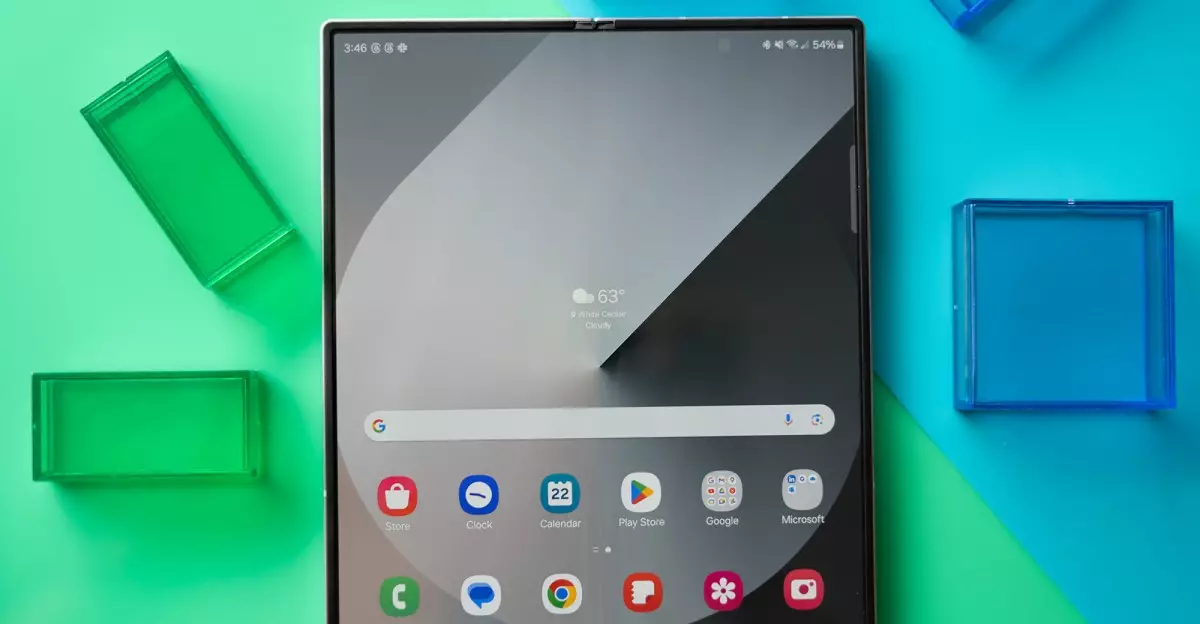Samsung has long positioned itself as a pioneer in the foldable smartphone arena, fiercely pushing the boundaries of innovation to capture consumer interest. Yet, despite a decade of relentless efforts and several model iterations, foldables still inhabit a niche market, largely overshadowed by their traditional slab counterparts. This discrepancy begs a critical question: are Samsung’s latest advancements enough to transform consumer perceptions and significantly grow their foldable market share?
The core of the issue lies not just in hardware innovation but also in consumer trust and confidence. While Samsung’s persistent development demonstrates a commendable commitment, incremental upgrades—such as marginal thickness reductions and software tweaks—have yet to inspire widespread enthusiasm. The recent releases, like the Galaxy Z Flip 6 and Fold 6, felt more like refinements than revolutionary leaps. As a result, potential buyers often remain on the fence, contemplating a foldable’s novelty versus its durability and value.
Despite these hurdles, Samsung’s upcoming lineup hints at a strategic shift that could alter the narrative. The anticipated Ultra models, promising thinner profiles and enhanced features, indicate a more aggressive effort to address long-standing consumer complaints. By narrowing the size gap with traditional smartphones and bringing more premium specs into foldables, Samsung aims to bridge the gap between innovation and practicality. Still, the question persists—can these incremental improvements directly translate into a significant uptick in sales or market acceptance?
Market Realities: The Stark Stats and Why Foldables Still Struggle
Market penetration remains the foremost challenge for foldable technology. According to TrendForce, foldables captured only 1.5 percent of the global smartphone market in 2024. Such a minuscule share reflects not just consumer skepticism but also embedded concerns about durability, cost, and overall value.
Samsung, despite enjoying a first-mover advantage in the United States, has yet to see widespread adoption. Multiple iterations of the same concept have failed to convince the majority of consumers that foldables are worth the premium. High repair costs, susceptibility to dust and damage, and the lack of robust water and dust resistance—especially an absence of full IP68 ratings—continue to undermine confidence. It’s one thing to market a futuristic device; it’s another to convince users that it can withstand everyday wear and tear, especially when competition comes from traditional phones known for their endurance.
Furthermore, the premium price tag remains a formidable barrier. Consumers are increasingly more cautious, scrutinizing whether the added value of a foldable genuinely justifies the cost. As prices for various tech products rise globally, spending hundreds more on a foldable when a standard flagship suffices becomes less appealing. The industry’s challenge is convincing consumers that foldables are not just a novelty but an essential upgrade.
Can Innovation and Market Expansion Drive Foldable Success?
While hurdles persist, hope springs from an evolving ecosystem. The industry’s horizon appears promising with rumors of Apple entering the foldable space in 2026—possibly with an innovative device dubbed “iFold”. Apple’s entry could serve as a catalyst, pushing manufacturers to accelerate their own innovations and address existing shortcomings. An Apple foldable would not only legitimize the category further but might also broaden its appeal beyond early adopters and tech enthusiasts.
Samsung’s strategy to diversify its foldable lineup—potentially introducing models across various price segments—demonstrates a clear understanding that market expansion requires accessibility. The proposed Ultra versions and larger, fully covered screens could lure those who seek premium features coupled with practicality. If Samsung manages to balance advanced specifications with improved durability and affordability, it could genuinely spark wider consumer interest.
However, success hinges on overcoming fundamental durability concerns. Even with new designs and materials, foldables still lag behind traditional smartphones in terms of robustness. Mass-market adoption will only occur when these devices can boast the same reliability and resilience as standard flagships—something that could take several years of technological refinement. Until then, Samsung’s hope lies in their ability to convince consumers that these devices are reliable enough for everyday use and worth the investment.
The Future of Folding Phones: A Market in Transition?
Ultimately, Samsung stands at a crossroads. It can continue to iterate on existing designs or leverage the upcoming wave of innovations, such as new hinge mechanisms and materials, to redefine what a foldable smartphone can be. Its reputation as an innovator bestows upon it a unique opportunity to steer the category toward mass-market viability, but luck and timing are equally important.
The unfolding trajectory suggests that foldables have yet to fully realize their disruptive potential. Companies like Samsung need to not only push technological boundaries but also educate and reassure consumers about their durability and value. As much as innovation is driven by hardware, market success relies profoundly on overcoming perceived reliability issues and price sensitivities.
Samsung’s latest efforts signal a willingness to rethink and revitalize the foldable category. Whether these moves will be enough to reshape consumer perceptions and reshape the market remains uncertain. Still, one thing is clear: in the race to define the future of smartphones, Samsung refuses to stand still. The next few years will reveal if their bold innovations can indeed turn foldables into must-have devices or remain an intriguing, yet niche, segment of the tech world.

